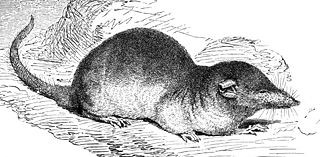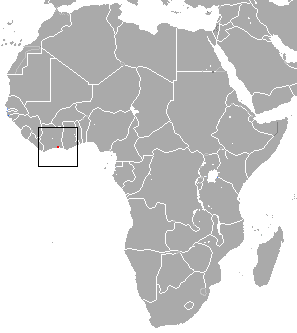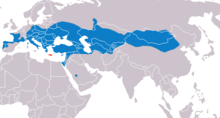
Shrews are small mole-like mammals classified in the order Eulipotyphla. True shrews are not to be confused with treeshrews, otter shrews, elephant shrews, West Indies shrews, or marsupial shrews, which belong to different families or orders.

The white-toothed shrews or Crocidurinae are one of three subfamilies of the shrew family Soricidae.

The greater white-toothed shrew is a small insectivorous mammal found in Europe and North Africa. It is the most common of the white-toothed shrews. This species is found along the Mediterranean, Netherlands, Belgium, Ireland, Germany and Portugal; in addition, the Osorio shrew of the Canary island of Gran Canaria, originally described as a separate species, was later discovered to be a population of introduced greater white-toothed shrew. Furthermore, a subspecies of the greater white-toothed shrew, Crocidura russula ibicensis, is found on the Mediterranean island of Ibiza. In April 2008, the greater white-toothed shrew was discovered in Ireland as well. Its preferred habitats are grassland and woodland. It is slightly larger than the lesser white-toothed shrew but otherwise very similar and can often be distinguished only by close inspection of its teeth which are unpigmented.

Wimmer's shrew is a white-toothed shrew found only in Côte d'Ivoire. It is listed as a critically endangered species due to habitat loss and a restricted range.

The genus Crocidura is one of nine genera of the shrew subfamily Crocidurinae. Members of the genus are commonly called white-toothed shrews or musk shrews, although both also apply to all of the species in the subfamily. With over 180 species, Crocidura contains the most species of any mammal genus. The name Crocidura means "woolly tail", because the tail of Crocidura species are covered in short hairs interspersed with longer ones.

Gugh could be described as the sixth inhabited island of the Isles of Scilly, but is usually included with St Agnes with which it is joined by a sandy tombolo known as "The Bar" when exposed at low tide. The island is only about 1 km (0.62 mi) long and about 0.5 km (0.31 mi) wide, with the highest point, Kittern Hill at 34 m (112 ft). The geology consists of Hercynian granite with shallow podzolic soils on the higher ground and deeper sandy soils on the lower ground. The former Gugh farm is just north of the neck across the middle of the island between the two hills. The two houses were designed and built in the 1920s by Charles Hamlet Cooper.

The Dsinezumi shrew, also known as the Japanese white-toothed shrew, is a species of musk shrew found in Japan and on Korea's Jeju Island. It is widespread, and considered to be of "least concern" by the IUCN.

The Cyrenaica shrew or Alexander's shrew is a species of white-toothed shrew in the family Soricidae which is endemic to Libya.
Güldenstädt's shrew is a species of mammal in the family Soricidae. It is sometimes considered a subspecies of the lesser white-toothed shrew, but more recent studies support it being a distinct species. It is named after Johann Anton Güldenstädt.

The Cretan shrew is a species of mammal in the family Soricidae. It is endemic to the island of Crete, Greece. Its natural habitat is temperate shrubland, and the animal is threatened by habitat loss. It is found in the mountainous highlands of Crete, having been displaced from lower altitudes by the lesser white-toothed shrew.
The Isles of Scilly are an archipelago 45 km (28 mi) off Land's End, Cornwall. Little of the fauna on, above or in the seas surrounding the isles was described prior to the 19th century, when birds and fish started to be described. Most records of other animals date from the 20th century onwards.










